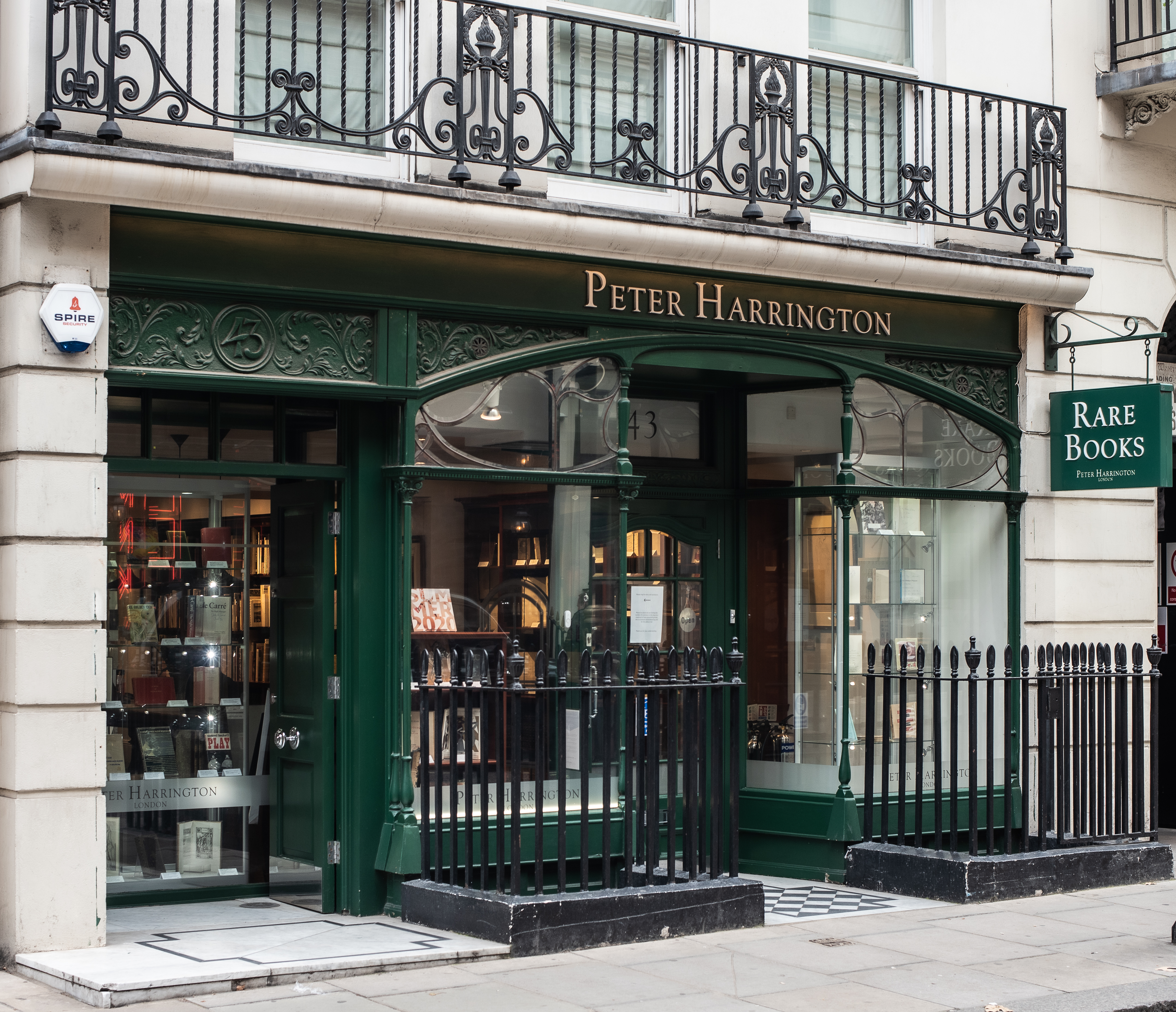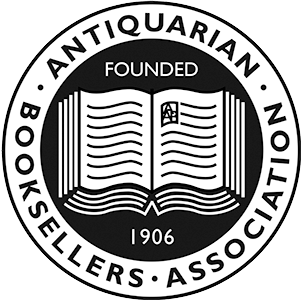London: Nicholas Prevost [vols. I-III]; Claude du Bosc [vols. IV-VIII],, 1731-39. The book that changed Europe First editions in English. Picart and Bernard's handsome work is a beautifully illustrated survey of religious observances around the world, marking "a major turning point in European attitudes toward religious belief" (Hunt, p. 1). First published in Amsterdam as Ceremonies et Coutumes Religieuses de tous les Peuples du Monde (1723-37). The monumental project was the result of a collaboration between Europe's leading engraver, Bernard Picart, and the publisher and author Jean Frederic Bernard. Both men were Protestant refugees driven by the Counter-Reformation from France to Amsterdam, where, in a fertile milieu of radicals and free-thinkers. An edition in English of three volumes only was published in 1731 by Nicholas Prevost under the title The Religious Ceremonies and Customs of the Several Nations of the Known World. Claude du Bosc completed the translation as The Ceremonies and Religious Customs of the Various Nations of the Known World, reprinting Prevost's edition and adding a further four volumes. This set marries the first edition of Prevost with the four volumes of du Bosc's continuation. Volume IV is erroneously numbered "vol. IV, part II" on the title page. As a reference book it was unprecedented: "no other work before then had ever attempted, in word and image, such a grand sweep of human religions" (ibid. p. 1). But as a meditation on culture, it was revolutionary: "it sowed the radical idea that religions could be compared on equal terms, and therefore that all religions were equally worthy of respect - and criticism. It turned belief in one unique, absolute, and God-given truth into 'religion', that is, into individual ceremonies and customs that reflected the truths relative to each people and culture" (ibid. p. 2). The work is sought after by Americana collectors for its treatment of the Native American peoples. Volume III contain descriptions of idolatry, soothsayers, priests, and prophecies, as well as languages, clothing, marriage, childbirth, diseases, and deaths. The engravings in this section include illustrations of people from Canada, Virginia, Florida, Hispaniola, Mexico, Venezuela, the Caribbean, and Peru engaged in a wide variety of activities. "Bernard's collection treats such individual topics as combat, sacrifices, religion, funeral customs, romance, and marriage" (Landis). Volumes III and IV also describe practices in India, the East Indies, Persia, and Africa. The other volumes show the ceremonies of Jews, Christians (Catholic, Orthodox and Protestant), and Muslims. Picart's illustrations of Jewish rituals are particularly valued. "Picart earned a place in the history of Jewish art by his realistic portrayal of Jewish religious rites... In his picture of a Passover celebration the artist himself can be seen, hatless, participating in the meal" (Encyclopedia Judaica XIII, 498). Provenance: perhaps from the library of Heneage Finch, fourth Earl of Aylesford (1751-1812). Finch was an accomplished landscape artist and etcher, several of whose works are held by the Tate. Each volume has a remounted rococo armorial bookplate on the front pastedown, engraved with a viscount's coronet and bearing the motto "Rapidus Contrarius Orbi". 7 vols bound as 6, folio (395 x 240 mm). With 226 engraved plates, some double-page or folding; title pages printed in red and black with engraved vignettes. Late 18th-century russia, sometime rebacked to style, spines with raised bands, compartments richly decorated in blind and gilt with with design of scrolling leaves, flowers, and lunettes, twin morocco spine labels, gilt panelled sides, marbled endpapers renewed, edges speckled brown. Chip to head of vol. I, touch of craquelure and patches of wear to bindings, last 3 vols. with minor tide marks to back covers (vol. VI also a bit darkened on front cover), scattered foxing and toning, some offsetting from plates to letterpress; vol. I: one plate with neat paper repairs to verso (p. 286), supplied double-page plate of the High Mass (p. 312) in a rather faint impression, another reattached (p. 366), minor worming (not touching title and A1, or plates); vol. V. a little dust soiling and worming to leaf U2. Overall a very good, attractive set. European Americana 733/66; Sabin 4934 & 62600. Lynn Hunt, Margaret C. Jacob & Wijnand Mijnhardt, The Book that Changed Europe: Picart & Bernard's Religious Ceremonies of the World, 2010.



![The Religious Ceremonies and Customs of the Several [from vol. IV, Various] Nations of the Known World. (photo 1)](https://d3525k1ryd2155.cloudfront.net/h/914/794/1613794914.0.x.jpg)
![The Religious Ceremonies and Customs of the Several [from vol. IV, Various] Nations of the Known World. (photo 2)](https://d3525k1ryd2155.cloudfront.net/h/914/794/1613794914.1.x.jpg)
![The Religious Ceremonies and Customs of the Several [from vol. IV, Various] Nations of the Known World. (photo 3)](https://d3525k1ryd2155.cloudfront.net/h/914/794/1613794914.2.x.jpg)
![The Religious Ceremonies and Customs of the Several [from vol. IV, Various] Nations of the Known World. (photo 4)](https://d3525k1ryd2155.cloudfront.net/h/914/794/1613794914.3.x.jpg)
![The Religious Ceremonies and Customs of the Several [from vol. IV, Various] Nations of the Known World. (photo 5)](https://d3525k1ryd2155.cloudfront.net/h/914/794/1613794914.4.l.jpg)
![The Religious Ceremonies and Customs of the Several [from vol. IV, Various] Nations of the Known World. (photo 6)](https://d3525k1ryd2155.cloudfront.net/h/914/794/1613794914.5.x.jpg)
![The Religious Ceremonies and Customs of the Several [from vol. IV, Various] Nations of the Known World. (photo 7)](https://d3525k1ryd2155.cloudfront.net/h/914/794/1613794914.6.l.jpg)
![The Religious Ceremonies and Customs of the Several [from vol. IV, Various] Nations of the Known World. (photo 8)](https://d3525k1ryd2155.cloudfront.net/h/914/794/1613794914.7.l.jpg)
![The Religious Ceremonies and Customs of the Several [from vol. IV, Various] Nations of the Known World. (photo 9)](https://d3525k1ryd2155.cloudfront.net/h/914/794/1613794914.8.l.jpg)
![The Religious Ceremonies and Customs of the Several [from vol. IV, Various] Nations of the Known World. (photo 10)](https://d3525k1ryd2155.cloudfront.net/h/914/794/1613794914.9.x.jpg)
![The Religious Ceremonies and Customs of the Several [from vol. IV, Various] Nations of the Known World. (photo 11)](https://d3525k1ryd2155.cloudfront.net/h/914/794/1613794914.10.l.jpg)
![The Religious Ceremonies and Customs of the Several [from vol. IV, Various] Nations of the Known World. (photo 12)](https://d3525k1ryd2155.cloudfront.net/h/914/794/1613794914.11.l.jpg)
![The Religious Ceremonies and Customs of the Several [from vol. IV, Various] Nations of the Known World. (photo 13)](https://d3525k1ryd2155.cloudfront.net/h/914/794/1613794914.12.l.jpg)
![The Religious Ceremonies and Customs of the Several [from vol. IV, Various] Nations of the Known World. (photo 14)](https://d3525k1ryd2155.cloudfront.net/h/914/794/1613794914.13.x.jpg)
![The Religious Ceremonies and Customs of the Several [from vol. IV, Various] Nations of the Known World. (photo 15)](https://d3525k1ryd2155.cloudfront.net/h/914/794/1613794914.14.x.jpg)
![The Religious Ceremonies and Customs of the Several [from vol. IV, Various] Nations of the Known World. (photo 16)](https://d3525k1ryd2155.cloudfront.net/h/914/794/1613794914.15.l.jpg)
![The Religious Ceremonies and Customs of the Several [from vol. IV, Various] Nations of the Known World. (photo 17)](https://d3525k1ryd2155.cloudfront.net/h/914/794/1613794914.16.l.jpg)
![The Religious Ceremonies and Customs of the Several [from vol. IV, Various] Nations of the Known World. (photo 18)](https://d3525k1ryd2155.cloudfront.net/h/914/794/1613794914.17.l.jpg)
![The Religious Ceremonies and Customs of the Several [from vol. IV, Various] Nations of the Known World. (photo 19)](https://d3525k1ryd2155.cloudfront.net/h/914/794/1613794914.18.x.jpg)
![The Religious Ceremonies and Customs of the Several [from vol. IV, Various] Nations of the Known World. (photo 20)](https://d3525k1ryd2155.cloudfront.net/h/914/794/1613794914.19.l.jpg)
![The Religious Ceremonies and Customs of the Several [from vol. IV, Various] Nations of the Known World. (photo 21)](https://d3525k1ryd2155.cloudfront.net/h/914/794/1613794914.20.l.jpg)
![The Religious Ceremonies and Customs of the Several [from vol. IV, Various] Nations of the Known World. (photo 22)](https://d3525k1ryd2155.cloudfront.net/h/914/794/1613794914.21.l.jpg)




